By Nick Stephenson (Part Six of… Well, several).
“Many a small thing has been made large by the right kind of advertising.”
As we explored in the previous section, there’s a lot of work that goes into optimising your book catalogue before you can expect to “win big” with paid advertising.
Ads themselves can only do one thing – send you traffic. So if that traffic doesn’t convert (and then those readers buy more from you) it’s tricky to make a profit.
Missed the previous sections? Catch up here: PART ONE | PART TWO | PART THREE | PART FOUR | PART FIVE
So with all this in mind, how can we use the “big three” ads platforms – Facebook, Amazon, and Bookbub – to make ads work for YOU?
To put this into context, here’s a detailed interview with USA Today Bestseller Bryan Cohen – where he talks about how he used paid ads to re-launch and re-energise a fiction series that had underperformed:
So, when it comes to actually USING these ads platforms, each has their own “way of doing things”, and each comes with their own nuances, pros, and cons.
But each has their place – and in this session, we’re going to break down the “how to” part of getting ads to work, so you can get up and running as quickly as possible (and start seeing some sales).
So, let’s dive in…
![]()
Probably the most popular ads platform right now, and for good reason. Setting up ads with Amazon is very straightforward, and because you’re targeting people already looking for books to buy, the conversion rate is often higher than either Facebook or Bookbub.
Which is good news.
The bad news is that competition is HOT – so if you don’t have the read-through rate (or conversion rate) to support expensive clicks, it might be tricky for you to compete at the higher levels.
The “simplicity” of Amazon ads can also be something of a disadvantage – as you don’t get the advanced targeting options that Facebook ads provide.
But all things considered, Amazon ads are a great place to start – and with your metrics all built in to your ads dashboard, you can get a handle on your “key numbers” pretty quickly (see the previous session for more on that).
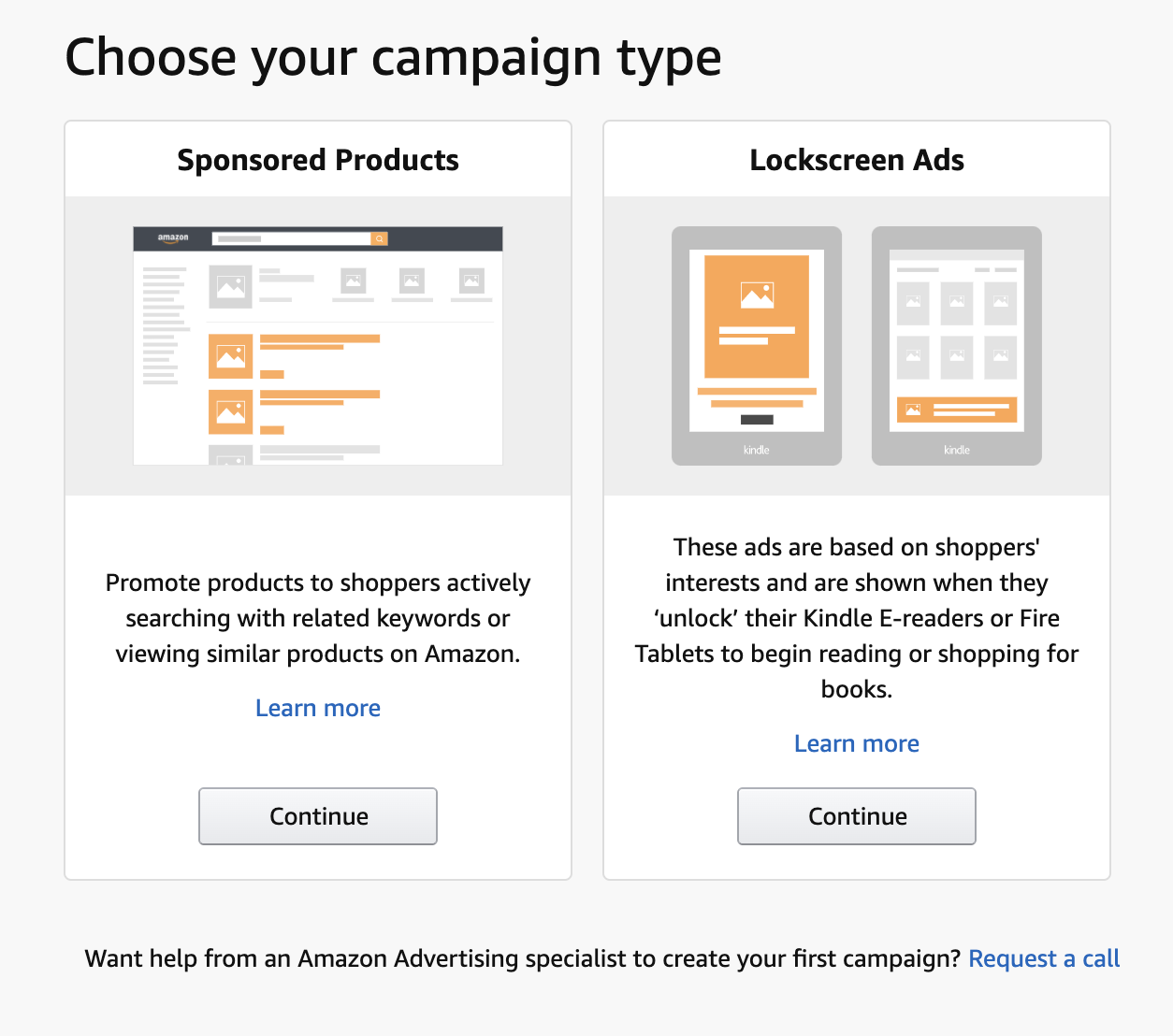
With Amazon ads, you can choose the following campaign types:
Once you’ve selected your campaign type, simply select the book you’d like to advertise and fill in your bids, budgets, and ad copy. Amazon will do the rest.
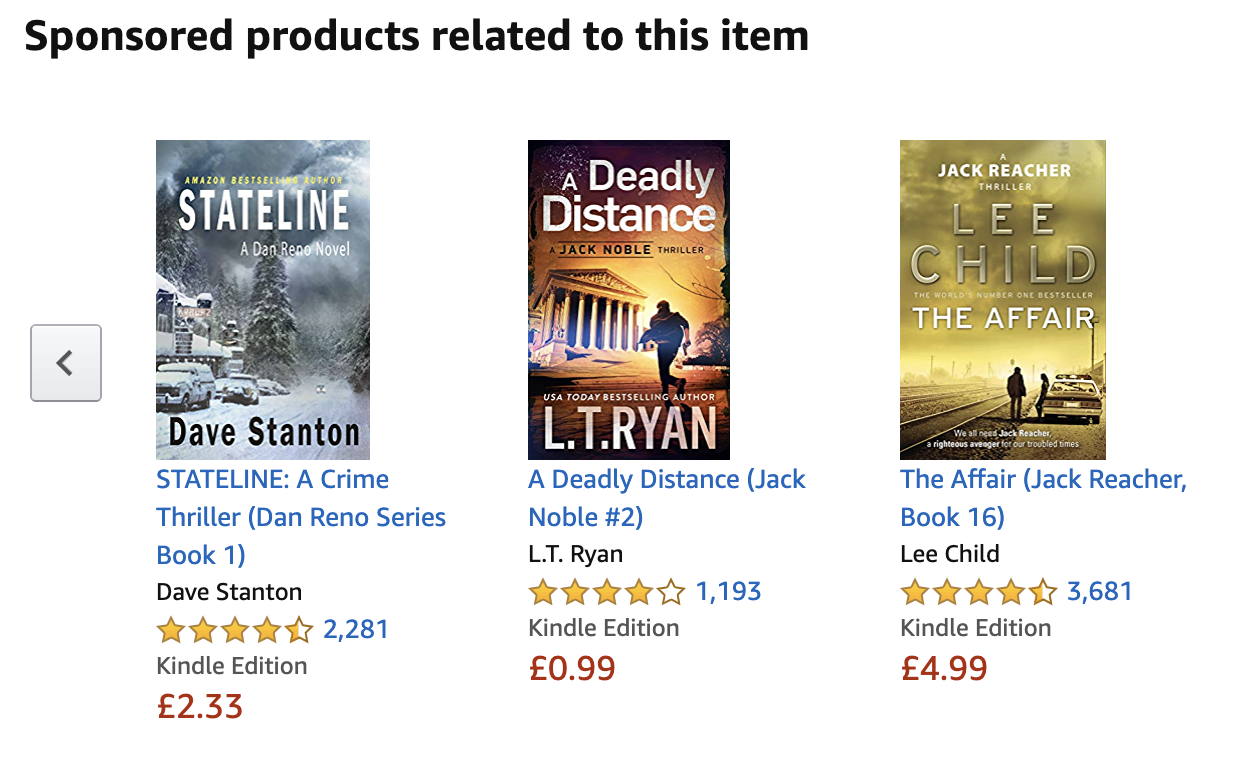
Here’s a runthrough of how to get started with Amazon Ads from the team at KDP:
As promised, it’s a relatively simple process (especially compared to Facebook ads… more on that in a moment).
But like everything, it takes time to “find your groove” and discover what’s working. It’s unlikely you’ll hit a home run right from the start, but with a consistent and data-focused approach, you can double down on what’s working and see some good growth.
For example, author ads expert Mark Dawson recently expanded his catalogue into translation for the German market. After a slow start, things started picking up and he was quickly making a great return on his ads in that new market.
As you’ll see, it’s a case of understanding your numbers and patiently building up traction. Take a look at this podcast episode where Mark explains “what’s working” in Amazon ads right now:
We’ll hear more from Mark – including details about his Ads For Authors course (and the $1,000+ of bonuses I’ve arranged for you) a little later.
In the meantime…

You can find a ton of metrics, stats, and numbers to play with and obsess about on your Amazon ads dashboard. But the bottom-line question you need to ask is, “is this ad campaign making me a profit?”.
In other words, your click-costs and conversion rates and read-through rates might look nothing like the examples I’ll give you below… but if the ad is making you money? Then you’re good to go.
That being said, there are a few “rules of thumb” to bear in mind – and having a few “baseline numbers” in your pocket before you can get a handle on your own can be useful. So here are a few pointers:

If you’ve got 1 book, your read-through rate is 1.00 (it can’t be anything else). And your earnings per reader is the same as your royalty (eg $3.50 on a $4.99 book).
If you’ve got 6 books and your read-through rate is solid, you might get a read-through rate of around 2.00 (each reader, on average, buys 2 books). If you’re priced at $4.99, that means your earnings per reader is $7.
In this example, the author with 1 book can only afford to spend $3.50 per sale on clicks. The other with 6 books can spend $7.00.
And if we assume the average cost-per-click is $0.50 that means:
So, “what’s going to work for you” will depend on that “earnings per reader” figure. If you can get that to around $7.00 then you’re going to be in a good position to start scaling up.

Generally, you want this to be around 10% if you’re priced in the $2.99 – $4.99 range. You can afford to go lower if your prices are higher (it all depends on that earnings-per-reader figure).
A 5% conversion rate if you’re making $10 per reader is better than a 10% conversion rate if you’re making $4 per reader, for example.
But, as a rule of thumb, if your conversion rate is significantly less than 10% and you’re priced in that range, chances are your product description, cover, look inside, or reviews need a little work.
![]()
A good rule of thumb across the board is to aim for a 0.1% click-through rate (regardless of other factors). This “one in a thousand” hit-rate is an indication that your ad is targeted to the right people and is inherently “clickable”.
If your click-through rate is consistently below 0.1%, and you’ve tried various different targeting options and given the ads time to settle in (usually 50,000 impressions or so) then chances are your cover needs work.
We found this was the case with a thriller series we were advertising – check out Part 3 for full details on what we did to quadruple results.
![]()
Our data suggests that the better your click-through rate, (and possibly your conversion rate, and read-through rate) the lower your cost per click.
NOTE: Amazon has actually stated that conversion rates and read-through rates don’t affect cost-per-click or impressions, but I’m not sure I 100% believe them on that (why would they not award advertising space to advertisers that make them more money?)
Regardless of what’s going on at Amazon HQ, from the data in my dashboard, and data I’ve seen from others, a higher click-through rate by itself almost always results in lower costs-per-click.
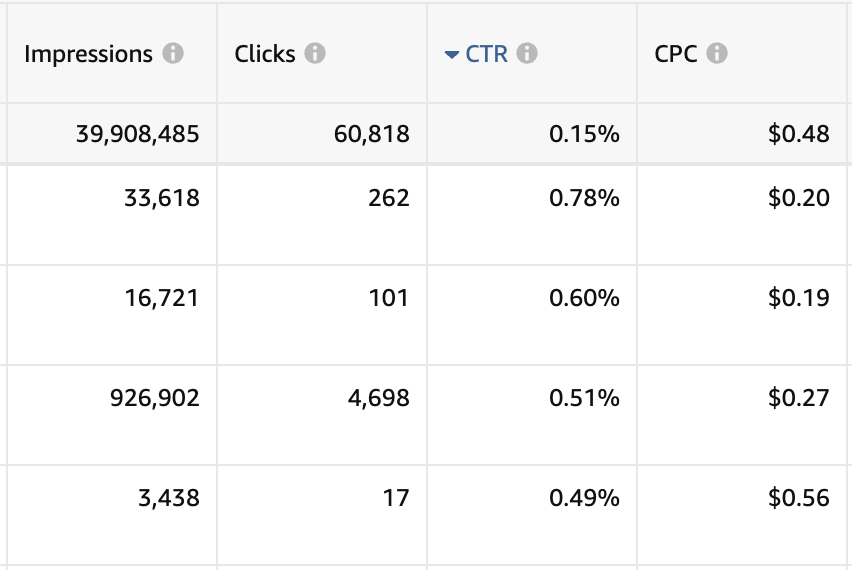 ^^ great click-through rates, and overall very low cost per click – the bottom figure was higher than the others but had a decent conversion rate, so we kept it going for a while.
^^ great click-through rates, and overall very low cost per click – the bottom figure was higher than the others but had a decent conversion rate, so we kept it going for a while.
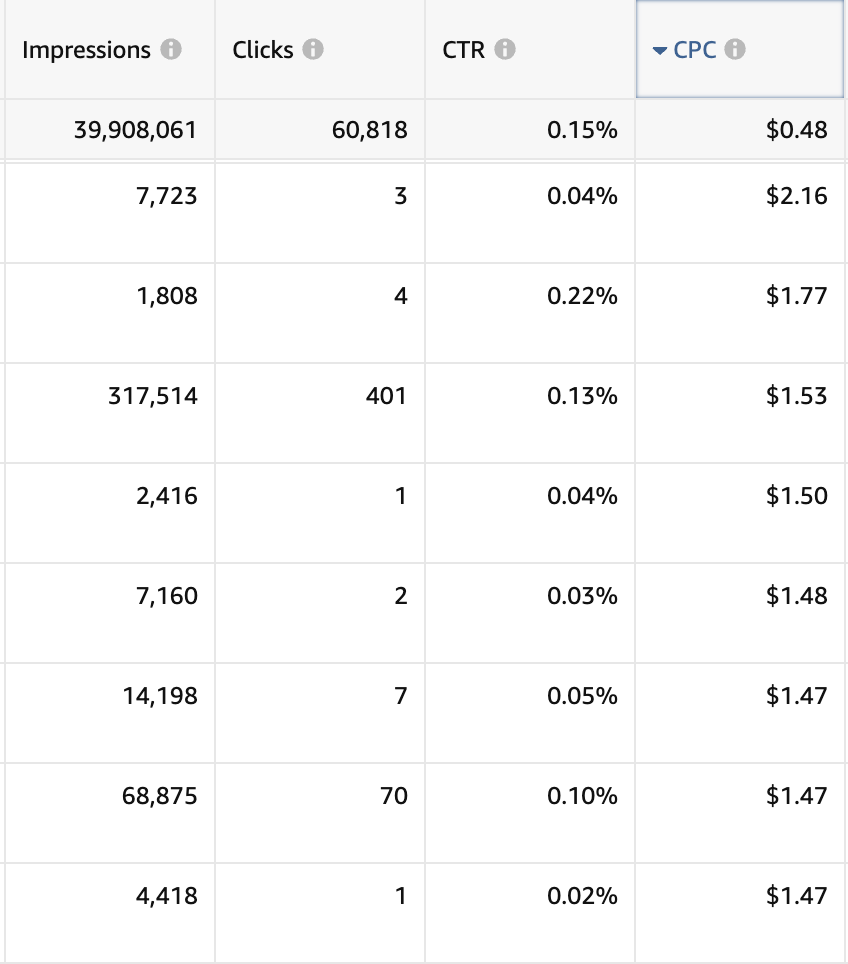 ^^ much lower click-through rates, much (much) higher cost-per-click – so we shut them down
^^ much lower click-through rates, much (much) higher cost-per-click – so we shut them down
In these examples, the lower cost-per-click campaigns also resulted in a higher conversion rate.
So, yes, having a good click-through rate can be important. It’s not the only factor, but it seems to help drive your costs down. Another reason why covers are so important!
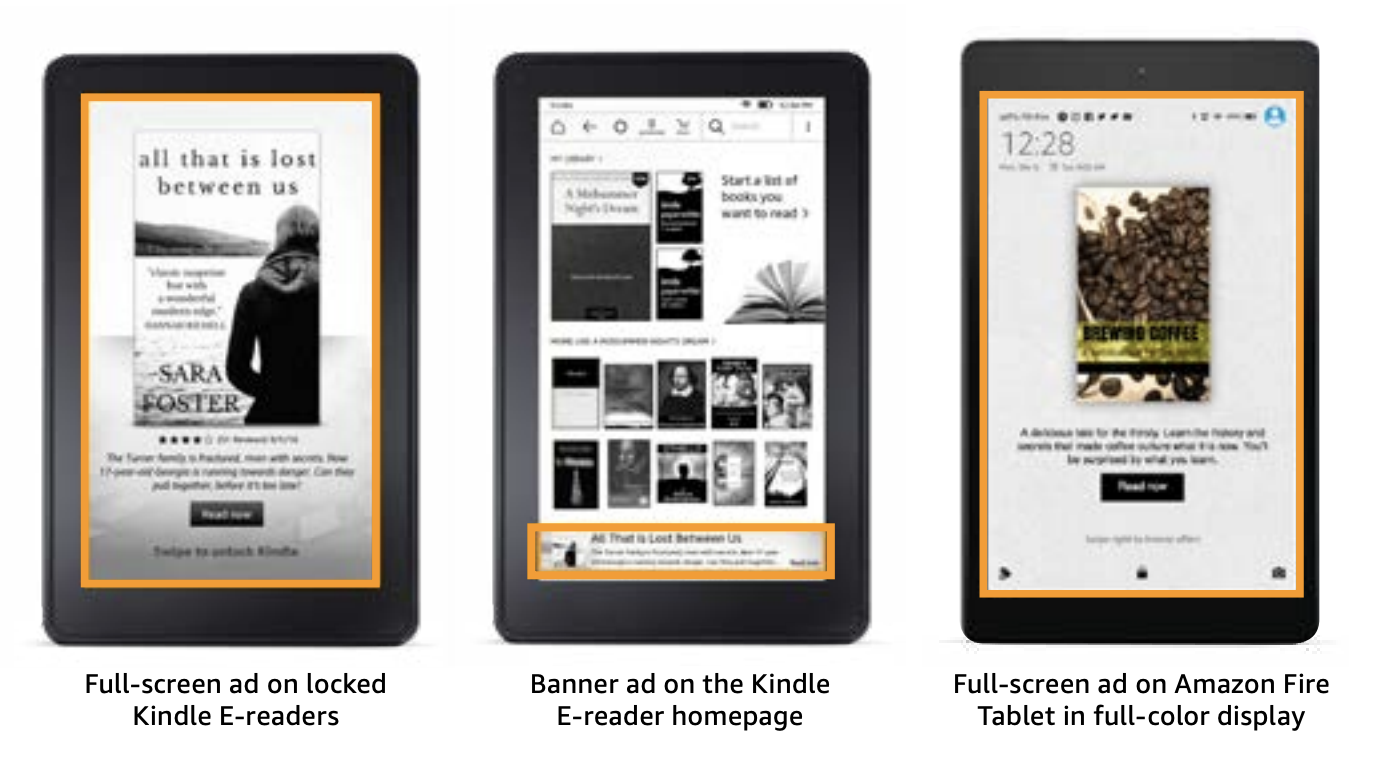
There’s no hard and fast rule over which of these options is more effective – but, in general, lockscreen ads are more effective for getting Page Reads (if you’re in Kindle Unlimited) and tend to result in fewer “real” sales compared to sponsored ads.
This can make tracking ROI very tricky, as Amazon’s ad dashboard doesn’t track page reads terribly well (there can be big delays). So you have to pay attention to your “before and after” page reads to measure effectiveness before the data reporting catches up.
Which, of course, begs the question, “if Amazon doesn’t report page reads right away, how do I know which ad campaigns are working?”
And the only answer is, “look at your click-through rate”. Similar to above, if your ad has a high click-through rate, chances are it’s getting you more page-reads than one with a low click-through rate. Unfortunately, that’s the only metric we can measure them with until the full data history comes through (which can take a while sometimes).

If your books are in KDP Select, you’ll pick up a lot of page reads. For a lot of authors, page reads can make up almost 50% (or more) of their royalties from ads.
So, if you’re not in KDP Select, you’re potentially missing out on 40-50% of the available revenue. Which makes it tricky to get a good ROI from your ads on Amazon – and makes it less likely for Kindle Unlimited customers to buy from you (because your book isn’t free as part of their membership).
In fact, there are very few (if any) authors making Amazon ads work AT SCALE who aren’t in KDP Select.
So, if you prefer to be “wide” with your books, it’s going to be that much more difficult to make Amazon ads work for you.
It’s a shame – but the reality is, Kindle Unlimited subscribers make up a hefty portion of the market. So if you want to invest heavily in Amazon ads, you might want to consider joining KDP Select if you haven’t already.
That being said, as mentioned before, you CAN make ads work at lower scales ($5 – $10 per day, for example) but if you want to compete at the higher levels and get more clicks, enrolling in Amazon’s exclusivity program will usually get you better results.

Amazon ads are great if you have a strong “earnings per reader” figure. Which you’ll find is the case across all advertising platforms.
The real strength of Amazon’s platform is its ease of use, the ability to see quickly which ad campaigns are likely to be performing best, and the fact that you’re targeting people who are already looking for books to buy.
However, it’s VERY competitive. So to make Amazon ads work at scale (beyond a few dollars per day), you’ll need to be prepared to pay higher click costs – and likely enroll your books in KDP Select.
Now, Amazon isn’t the only game in town – and, for many authors, it might not even be the most effective.
Amazon’s lack of targeting options means that it can be tricky to display your ads to the best audiences. But what if you could send ads to people who have already read your books? Or people who are on your email list? Or people who clicked through to your website, but didn’t sign up for your list? Or people who entered a contest? Or people who watched one of your videos past a certain point? Or people on your review team?
What if you needed to drive thousands of clicks in a single day, without having to spend forever setting up dozens of campaigns and waiting (forever) to see which ones you could scale up?
Welcome to Facebook ads, folks. The largest and most highly targeted ads platform for authors on the planet.
And we’ll talk all about that in the next section…
Click the button below to move on!
Including some brand-new modules from Janet Margot – an ex-Amazon employee who worked behind the scenes at KDP and helped develop the Amazon Ads dashboard (so she has lots of secrets to spill).
In case you missed the last few emails about this, here are the exclusive bonuses you’ll get from me when you enroll today:
To find out more about Ads for Authors, and to get access to my exclusive bonus courses, all you need to do is click the link below and kickstart your 30 day guarantee before the deadline.
Click here to check out full details for Mark Dawson’s Ads for Authors